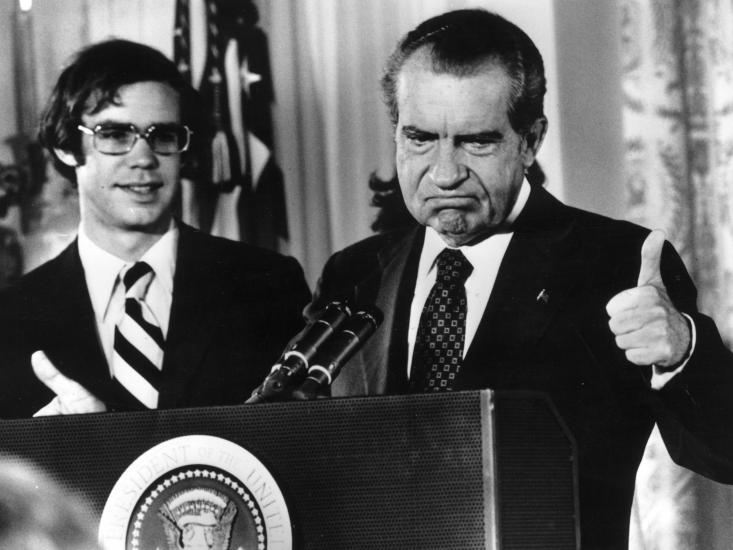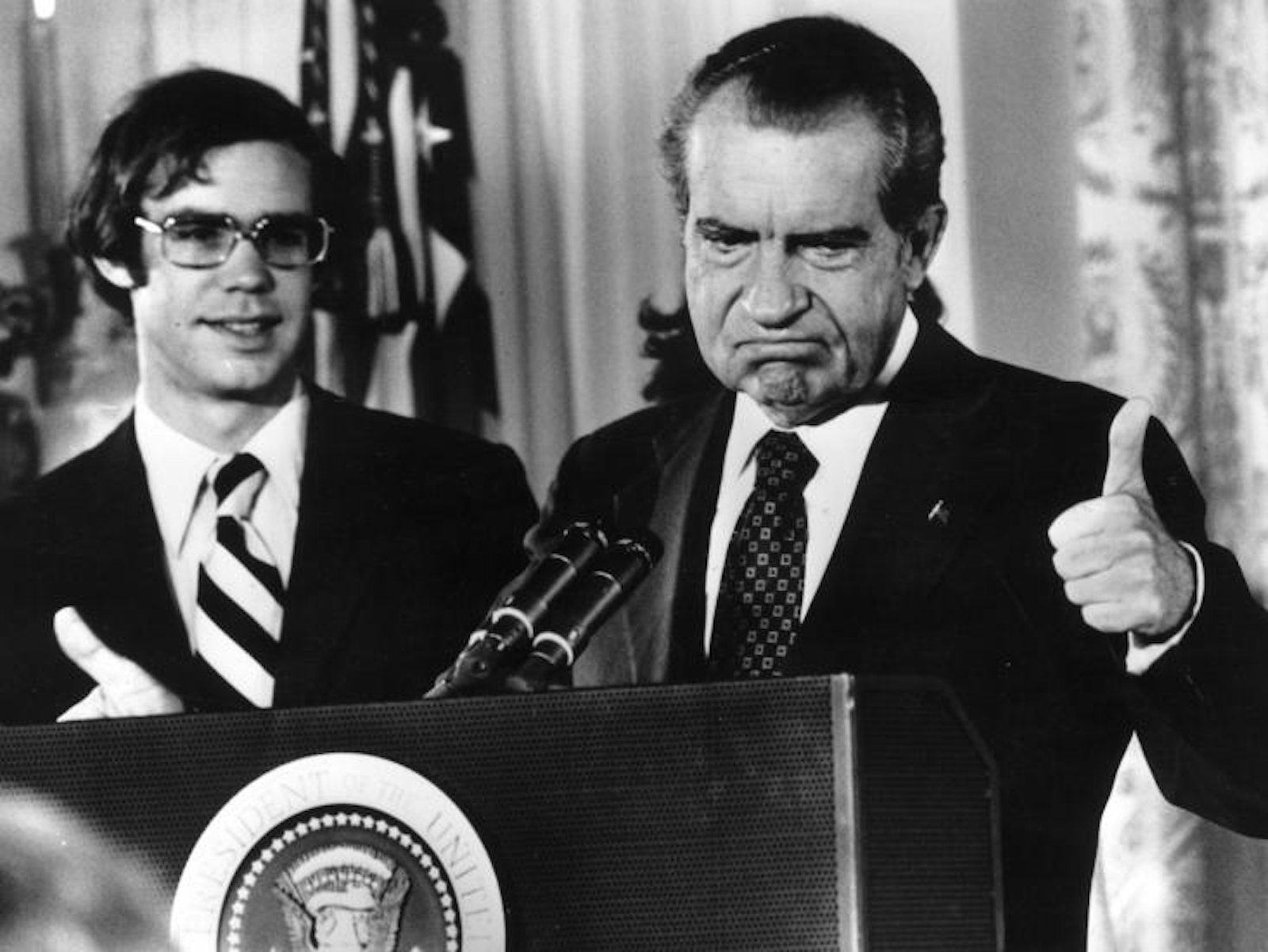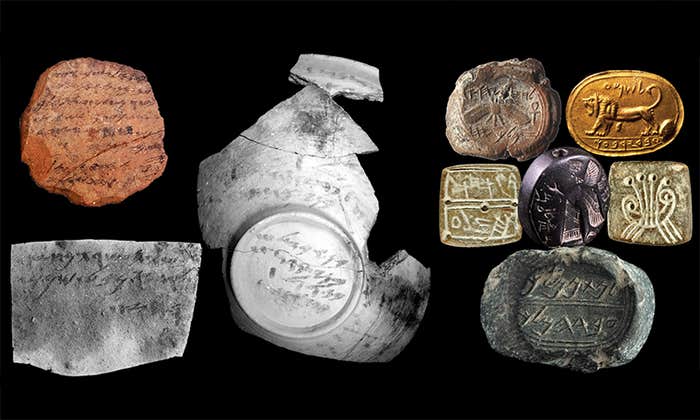Our cultural history is crumbling. Not because of bad education—though one might make that argument—but because of chemistry.
Between the late 60s and the late 80s, much of our culture—from the Nixon trials on television to unreleased music from famous artists like the Beatles—was recorded on magnetic tape, and this tape is starting to disintegrate. Some of the audio and visual data has already been safely adapted to digital storage, but the majority hasn’t—and it’s a problem of massive proportions.

The Cultural Heritage Index estimates that there are 46 million magnetic tapes in museums and archives in the U.S. alone—and about 40 percent of them are of unknown quality. (The remaining 60 percent are known to be either already disintegrated or in good enough condition to be played.)
What’s more, in only about 20 years we won’t be able to digitize them, according to audio and video preservationist George Blood, in Philadelphia. This is partly because digitization machines that can handle the tapes have ceased production. On Sept 30th, for example, Sony stopped taking orders for videotape machines, and in June 2015, the last audio reel-to-reel machine went out of production. Plus, the ones that already exist are wearing down—and parts to repair them are difficult to come by. And to add to this, the tapes themselves are degrading. Trying to digitally process these in studio-grade machines, for example, clogs the tape player heads, wrecking the very machinery that can digitize the tapes as stocks of them are dwindling.
The cause of tape disintegration is something called sticky shed syndrome, a result of the hydrolysis of esters. When ester, a compound that partly constitutes the polyurethane binder that holds a tape’s magnetic particles, combines with water, they form a carboxylic acid plus alcohol. The acid and alcohol make the tapes sticky and unplayable. This means that tapes stored in damp, humid climates—like so many of the unplayable 1960s jazz tapes filling attics in the South—are especially prone to disintegration. Audio engineers know the sound of sticky shed right away: The tapes squeak and squeal across the players.
Sticky shed tapes are not lost to the world forever, however. They can be baked in a low-temperature oven (about 100 degrees F) for eight hours or more. This often drains the water from the tape and can make it playable for a short while. However, baking tapes also makes them precariously brittle—so treating tapes of unknown quality isn’t a good idea.
But letting these tapes just disintegrate would be akin to idly watching millions of books fall into a pit of fire. So Steve Morgan, an analytical chemist at the University of South Carolina, and Eric Breitung, a senior research scientist at the Metropolitan Museum of Art in New York City, decided to help prevent that outcome. Since batches of tapes stored in the same conditions could be degrading at different rates—due to the different manufacturing techniques and materials used throughout the years by different brands—Morgan and Breitung needed a way to figure out which tapes are degrading the fastest to prioritize the arduous digitization efforts.
Before them, other researchers had employed infrared spectroscopy, a non-invasive technique, to assess the damage. It works by identifying various light absorption peaks, corresponding to changes in ester, carboxylic acid, and alcohol content—each absorbs light differently. However, this approach wasn’t totally reliable: Not only were the peaks not very different between playable and nonplayable tapes, making the level of degradation difficult to determine, but the sound engineers also had difficulty working with the tool.
To overcome these hurdles, they combined a laptop-sized infrared spectrometer with an algorithm that uses multivariate statistics to pick up patterns of all the absorption peaks (this kind of analysis is called chemometrics). As the tapes go through the breakdown reaction, the chemical changes give off tiny signals in the form of compounds, which can be seen with infrared light—and when the patterns of reactions are analyzed with the model, it can predict which tapes are playable. The sound engineers could use this, says Breitung. “We couldn’t have them analyzing spectra—it would take too long and the types of changes were too subtle.” Taking spectra samples at 20 different places along the tape, the researchers get a pretty good sense of the tape’s condition.
Letting these tapes just disintegrate would be akin to idly watching millions of books fall into a pit of fire
With their new device, they started surveying cultural institutions around the U.S. to find the most rapidly degrading tapes, and it turned out that the quarter-inch audiotape—first used in 1972—was the type of media that the institutions were most worried about saving.
In a test of 133 quarter-inch audiotapes belonging to the Library of Congress, containing various media, the researchers identified which ones were unplayable with 92 percent accuracy. They confirmed the results by listening to them. A report on the new tool and the researchers’ findings was published in August in the journal Analytical Chemistry.
Tape also isn’t the only aging media in museum collections. For Gene DeAnna, head of the Library of Congress’s Recorded Sound Section, it’s the worsening state of lacquer discs that keeps him up at night. The problem with lacquer discs, which were used to record sound in the 1930s, first by movie studios and then by radio stations, is basically the same with magnetic tape. Even “if they are properly stored,” says DeAnna, “they start to break down.”
One batch of lacquer discs that has records of radio dispatches from World War II has been particularly challenging to digitize. Many radio stations had switched to using discs manufactured with a glass base instead of the typical aluminum base, since aluminum was in demand for the war effort. Glass discs are even more fragile. But a physicist at Lawrence Berkeley National Laboratory, with the help of some students, developed a machine to record the dispatches without having to touch the discs. Called IRENE—an acronym for Image Recover Erase Noise, Etc.—it takes a high-resolution digital image of the disc using a beam of light and translates it into a digital file.
DeAnna thinks this technology could transform the science of archives. Instead of making a copy of an original, and then a copy of that copy—and losing a bit of fidelity each time—IRENE offers the possibility of capturing the audio in its original state.
As opposed to making a copy and having the quality decrease, says DeAnna, “for the first time audio archivists can start thinking about preserving the object as an image of the grooves.”
Katharine Gammon is a freelance science writer based in Santa Monica, Calif. who writes for Discover, Wired, and other outlets. @kategammon


























